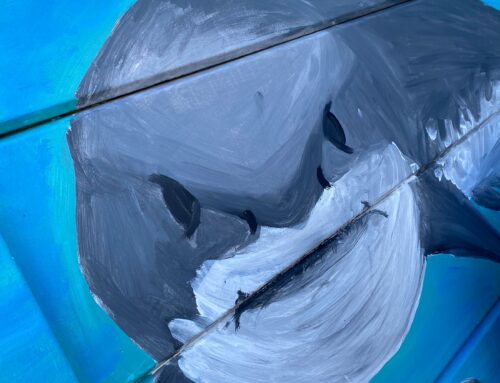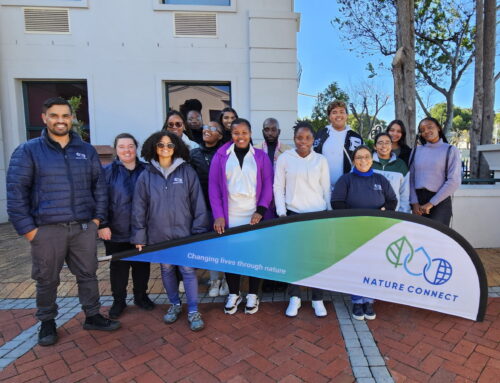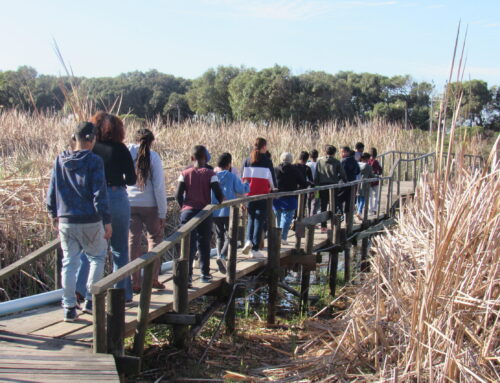Written by Training and Small Grants Assistant, Meagan Eddy.
World Wildlife Day is celebrated every year on 3 March to commemorate the signing of the Convention on the International Trade in Endangered Species (CITES) in 1973. This legal document is one of the most powerful tools in wildlife conservation, regulating the international trade of over 40 900 species of plants and animals, from the most common to critically endangered.
This year’s theme is ‘Connecting People and Planet: Exploring Digital Innovation in Wildlife Conservation’. Over the years, technology has grown its role in conservation, such as the new opportunities that 3D printing has brought to animal prosthetics, less invasive research methods, rehabilitating damaged coral reef systems and printing small anti-poaching drones. Wildlife has also assisted in technological advancements through biomimicry, for example, the method chameleons use to change their skin colour is inspiring progress in developing multi-colour 3D printers.
Let’s explore more examples through a few wildlife animals that can be found here in Cape Town:
Cape Seotine Bat (Laephotis capensis) [Photo from Eco-Solutions, by GNoRBIG]
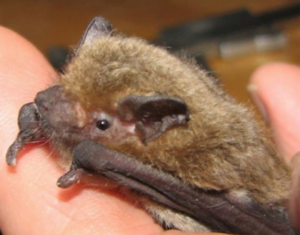
There are around 12 species of bats within the Western Cape. How do we know this? DNA sequencing technology has offered genetic proof in identifying these species. For a quicker in-field option to identifying similar looking bat species, Bat Detector technology is used to record the ultrasonic pulses emitted by bats, which are unique to each species, and translate the high frequencies to a level that is audible to humans. Similar devices are also used to record infrasonic giraffe and elephant communications.
Bats’ echolocation strategy inspired todays’ sonar (using sound waves) and lidar (using light waves) technology found in object sensing devices, such as those used to assist blind or low-vision individuals, car parking sensors, and in sonograms for pregnancy scans.
Cape Eagle Owl (Bubo capensis) [Photo by Fayruz Prins]
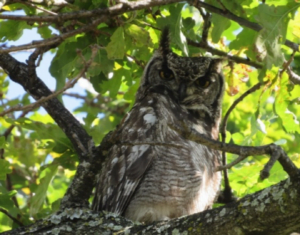
Urbanisation and deforestation has drastically reduced nesting and hunting habitats for such birds of prey; at the same time, GPS tracking technology has been valuable in documenting how far birds, and other animals will travel in their home range, to find food and for migration. In addition, drones and GIS mapping technology has greatly assisted this capturing, monitoring and comparison of diverse data sets to reveal new understandings in species, population and ecology dynamics.
Birds have been a source of inspiration for flight even before Leonardo Da Vinci drew the first flying machine. The aviation industry has come a long way, and engineers still draw inspiration from birds, as well as other flying animals, to improve on this technology. For example, unique turbulence disrupting structures found on owl feathers inspired adaptations to many aeroplane models, wind turbines, fan blades, drones and turbomachinery to make them quieter and more efficient.
Variegated Lesser Thick-tail Scorpion (Uroplectus variegatus) [Photo by Anneka van den Bosch]
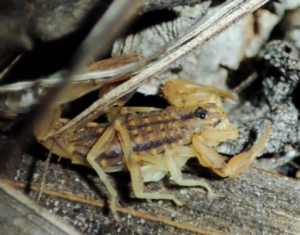
Scorpions are able to detect nearby vibrations, allowing them to be highly sensitive to their surroundings and to react to predator or prey with speed and precision. While black light torches have made evening scorpion ‘hunts’ a safer camp activity; microscope technology has allowed us to get a much closer look at better understanding many small creatures and plants and their fascinating adaptations.
One of the scorpions’ vibrations sensors looks like micro-cracks in the skin, and is found in the joint above their feet. The natural functioning of this ‘senor’ has led to improvements in flexible pressure sensors. These are used in wearable health-care monitoring devices, such as your Fit-bit heart rate monitor, as well as in autopilot technology, voice recognition and in motion and performance capture technology, used in movie and video game character design.
Slender Restio Grasshopper (Besticoides meridionalis) [Photo by Clifford Dorse]
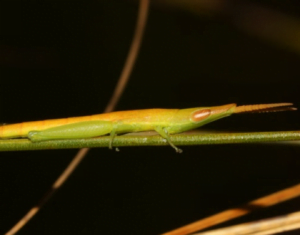
New populations of this grasshopper species have been located thanks to the easy-to-use citizen science app iNaturalist, a platform where nature enthusiasts and species experts can engage about wildlife they find in real time. This particular grasshopper species is endangered and is endemic to the Western Province of South Africa. iNaturalist contains only 16 submitted observations. Each new observation of any species provides valuable information for researchers and conservationists to monitor and protect them.
Scientists have long-since been captivated by grasshoppers’ legs and their unexpected jumping power, leading to improvements in bionic-leg technology as a rehabilitation tool. A grasshopper’s ears, which are located just behind their legs, are sensitive to even very small sound vibrations. This design has also been used to develop important safety features in the mining industry.
Arum Lily Reed Frog (Hyperolius horstockii) [Photo by Safiyyah Hattas]
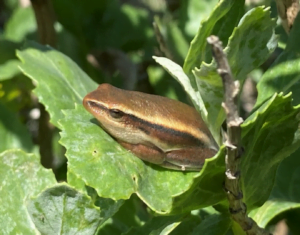
Damage to vital wetland systems are threatening the survival of many amphibian species. Environmental engineers work to develop new ways of rehabilitating damaged ecosystems or reducing negative impacts. Our Western Leopard Toad Underpass Project is a good example of such an innovation, as these tunnels under the road aid endangered toads to safely cross the road during their annual breeding migration.
Have you ever wondered how frogs ‘stick’ onto vertical surfaces or wet rocks? Many frogs’ toe pads are covered in hexagon-shaped cells, with mucous glands in the grooves releasing a watery secretion. This combination makes it possible for them to trap air bubbles under their feet, which is the final ingredient to create a strong force that holds the animal in place. This functional design has helped improve graphene production, widely used in electronics; and improve surgical grippers used in key-hole surgery, making it easier to hold and release different types of tissue.
It is incredible to learn how wildlife have inspired technological development through biomimicry and how technology is finding new ways to assist in conservation. There are many more examples to learn about, and undoubtedly even more yet to be discovered. It seems the relationship between wildlife and technology is one to last.


